I bought a used Dan McHale backpack, which was made in 1993. The base price was $378, and with the accessories, it cost $447. The extended volume is 6000 ci, the compressed volume is 3500 ci, and the average volume is 5200 ci. It also has removable side pockets with a combined volume is 700 ci. All of Dan's packs are made to order, and built to your dimensions. Fortunately, my dimensions were similar to the original owner. The pack is made out of heavy purple and black nylon. All of the parts are very robust. The McHale pack has a easy to adjust shoulder strap system as well as a very comfortable and easy to adjust waist belt.

Here you can see the back of the pack. There are ice axe loops and the fabric cover on the bottom of the pack (which isn't very visible). There is a lower external central pocket with a purple top (where the thermometer is). There is a large zipper which allows access to the bottom compartment of the pack. The lid is visible, (the bottom edge has a Mchale Company white label).
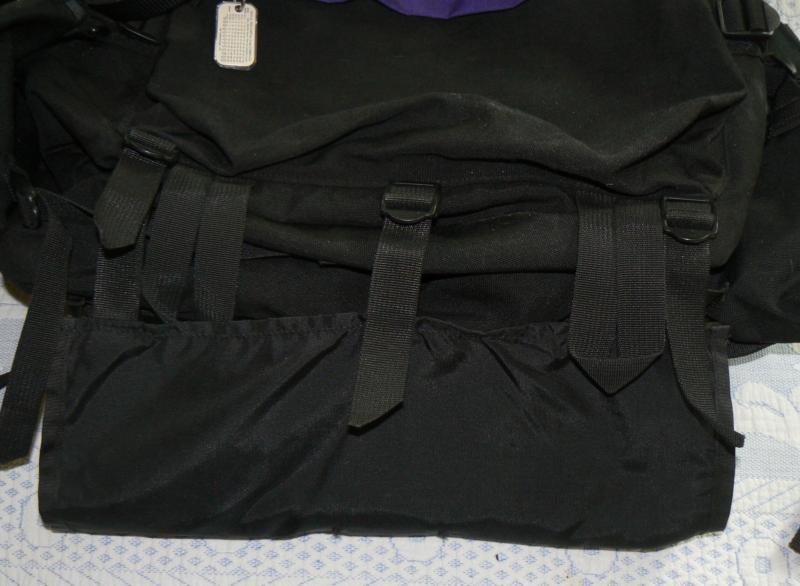
On the bottom of the pack, is a removable fabric cover. It is secured on the front and rear with three one inch nylon straps. It can be used to hold a sleeping pad or other things to the outside bottom of the pack. Also visible are two black nylon ice axe loops.
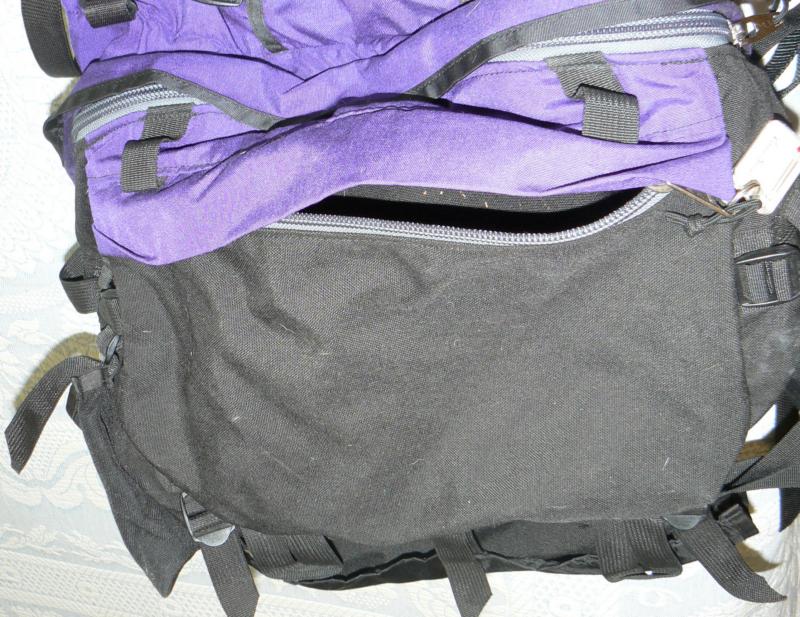
Here you can see the central pocket of the pack. It has a heavy zipper, a purple top and a black bottom.
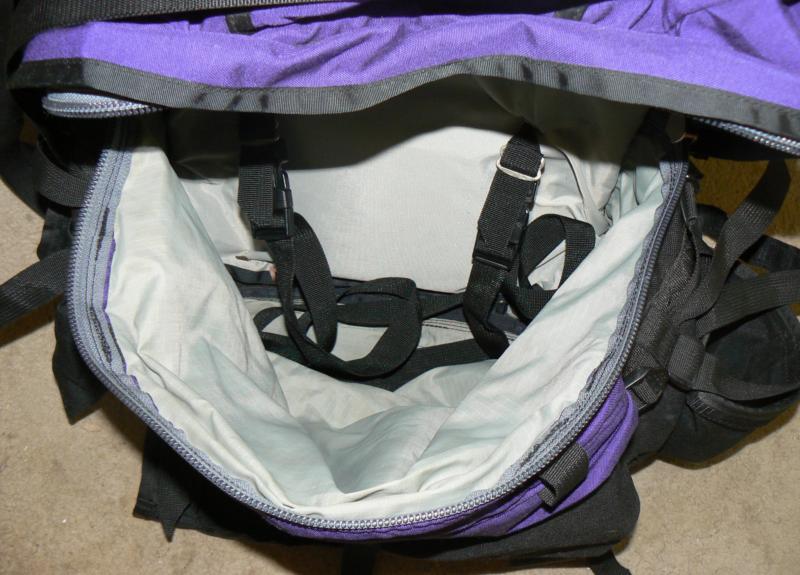

This is a view with the large zipper opened. The first picture shows two straps which are used to secure the sleeping bag against the pack. The second picture shows a nylon divider which is used to divide the top and bottom of the main pack compartment. The divider is sewn to one side of the pack, and attaches with three nylon straps to the other side of the pack. The straps can be undone if desired to make one undivided pack.
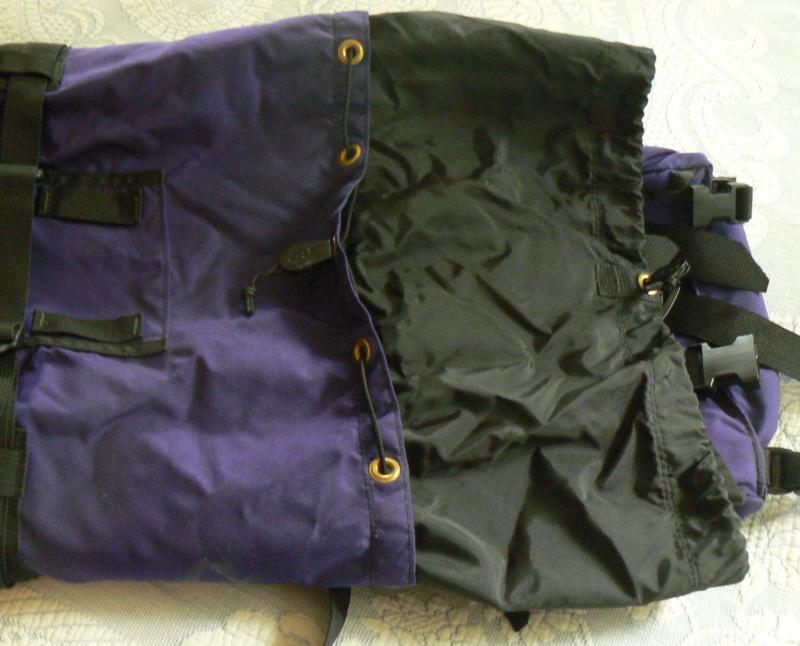
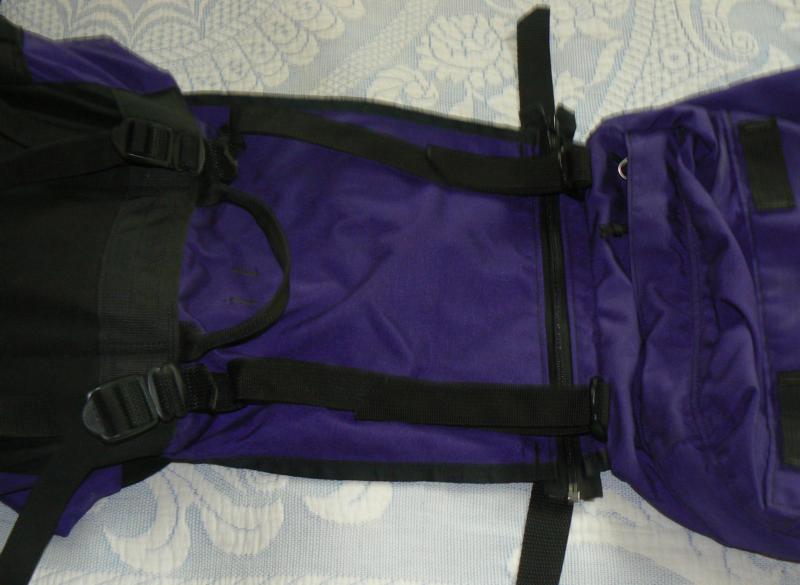
Here you can see the pack extension. There is a drawcord on the top of the pack, as well as at the top of the extension. The cords go through grommeted holes, reducing wear and making them easy to replace. The other picture shows the pack lid extension. It is a sheet of purple nylon which is normally folded out of the way. There is a zipper on the lid side so the lid can be removed. Sticking out of the lid extension are straps which can be used to cover the top of the pack if you decide to use the pack without the lid attached.
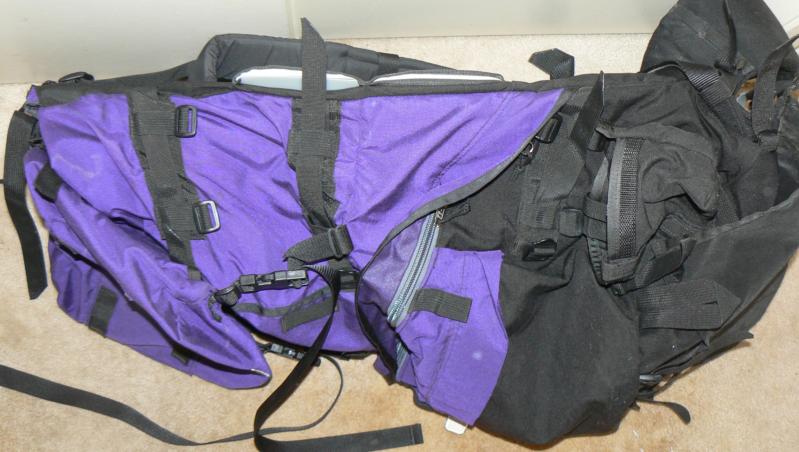
There are three black compression straps, with a black reinforcing layer sewn to the pack. The main pack zipper is visible, as is a water bottle holder in black nylon. There are attachment points on the side for side pockets.
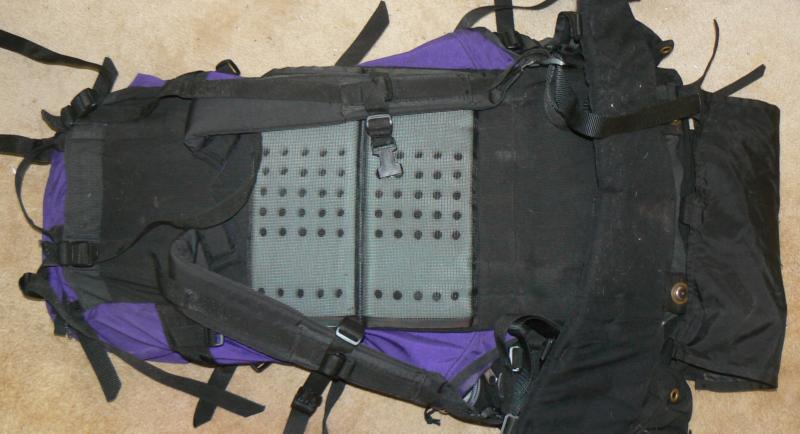
Here you can see the front of the pack. There are two removable foam white back pads with holes in them for ventilation and covered in heavy black mesh. The hip belt bolts to the pack and bottom of the frame via a bolt on each side. The shoulder straps are straight and feature Dan's 'bypass' system. This allows the shoulder straps to be adjusted separately from the straps used to snug the top end of the pack against the top of your pack. The top lid is secured to the pack with two one inch straps as well a rear nylon flap that isn't visible here.
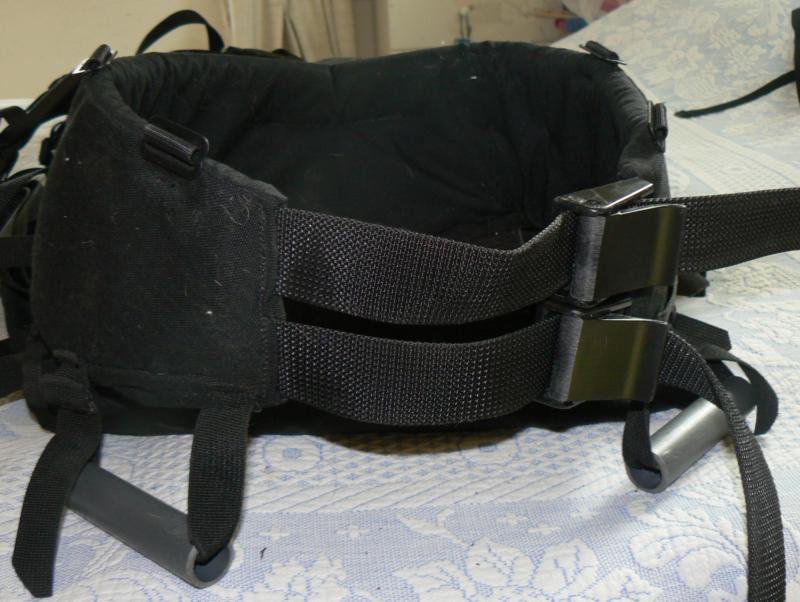
Here you can see the of the hip belt. There are attachment points on the top of the belt for pouches or water bottle holders. The belt itself is quite high, which allows for very good weight distribution. Also note the two buckles for the belt. This allows the curvature of the belt to very closely mirror the curvature of your hips. This allows for a good fit for everyone. There are handles under the belt with PVC tubing. This is to rest your hands while hiking. I don't have these on my spectra McHale pack.
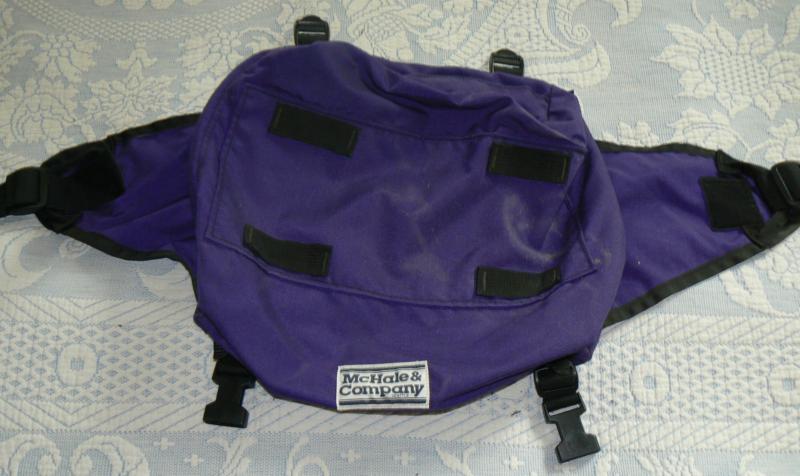
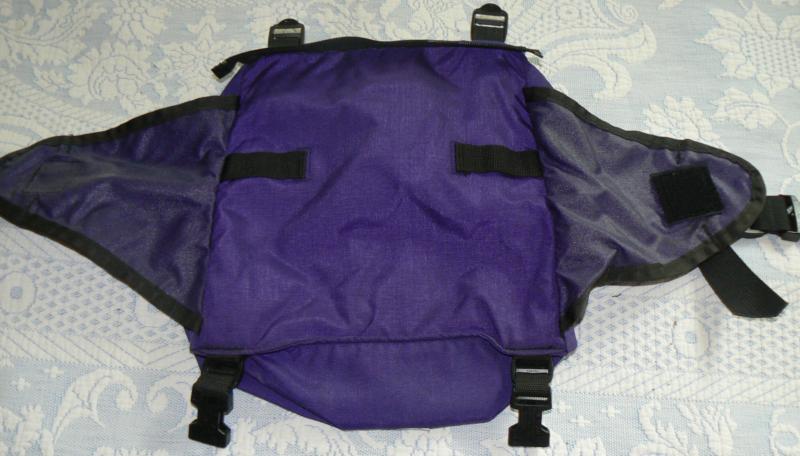
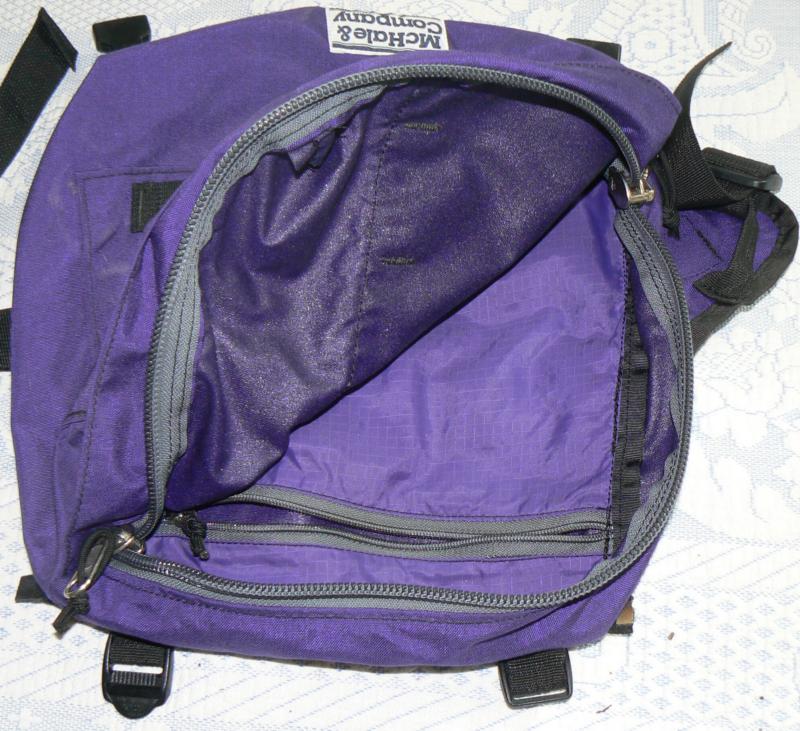
The lid can be removed from the pack and made into a fanny pack. There are flaps on the sides of the lid which can be folded over each other and secured with velcro when used on the pack. There are four black nylon straps sewn to the top of the pack, so things can be attached to the lid. The lid has a very heavy zipper which goes around two sides of the lid for easy interior access. There is an inner pocket inside the lid for smaller items.
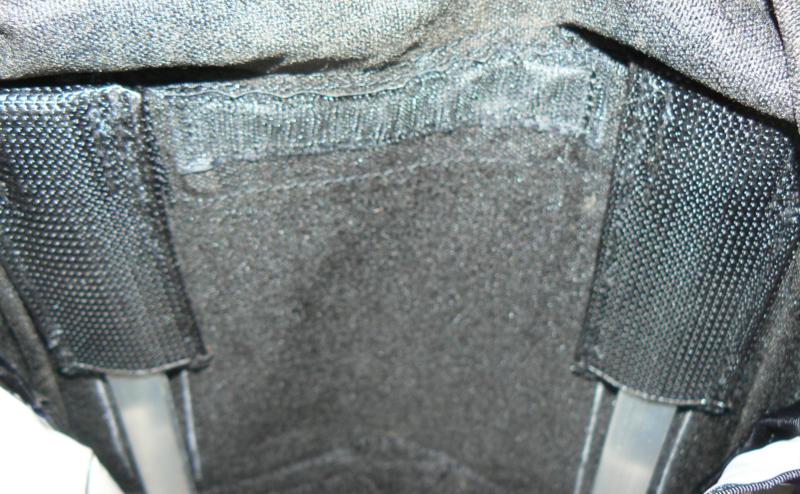
Here you can see the top inside of the pack. There are two heavy nylon pockets sewn to the inside of the pack where the frame stays attach. They are held in place with the two exterior bolts of the pack. They can be removed by removing the bolts. This is only necessary if you want to reshape the stays. Each stay is roughly 3/4 inches by 1/8 inch, 7071-T6 aluminum. Looking inside the pack, the quality of the workmanship is clear. For example all the seams are covered in seam-tape.

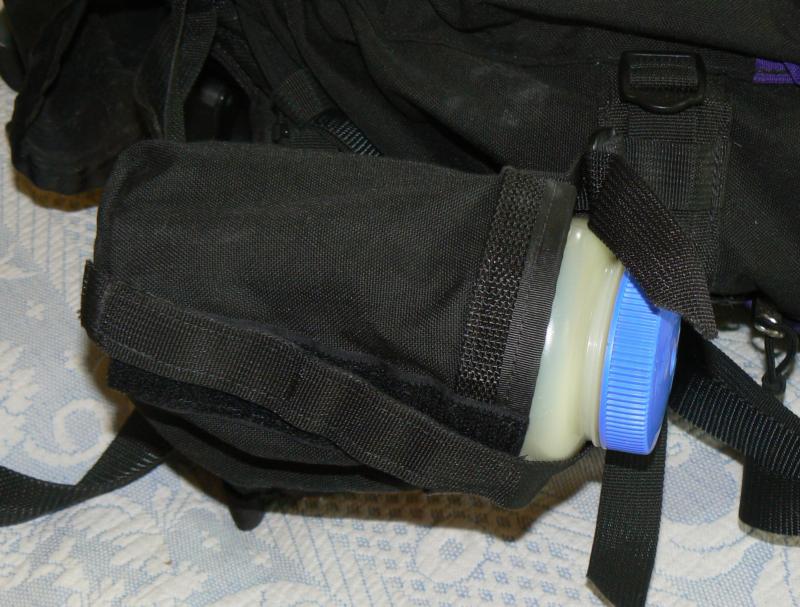
Here you can see the 'standard' sized side pockets, front and rear. They strap on the sides of the pack. There is a sleeve which is closed at the bottom, on the side that goes against the pack. I am not sure what this is for, perhaps it is for holding skis? I also have a pair of black nylon water bottle holders. These can be strapped on the sides of the pack or on the belt, for a total of 2 liters of water bottle holders. This pack pre-dated the popularity of hydration bladders. Perhaps I will retrofit my pack for a 100oz hydration bladder. Not shown is a waterproof nylon cover for the whole pack in case of heavy rain.
All of Dan's packs are designed to be as robust as possible. I suppose he could shave off a few ounces by using thinner webbing, or smaller fasteners. I think the zippers could be smaller and lighter and still last a very long time. Perhaps if you ask him, he will build a pack with ultra-light stuff. I didn't get the pack to shave ounces, I got it to last. I am confident that nothing will wear out in my lifetime. Highly recommended.
If you have comments or suggestions, Email me at turbo-www@weasel.com
Created with gnu emacs and template-toolkit, not some sissy HTML editor.
No Java or javascript needed to view my web pages. They
both have significant security issues.